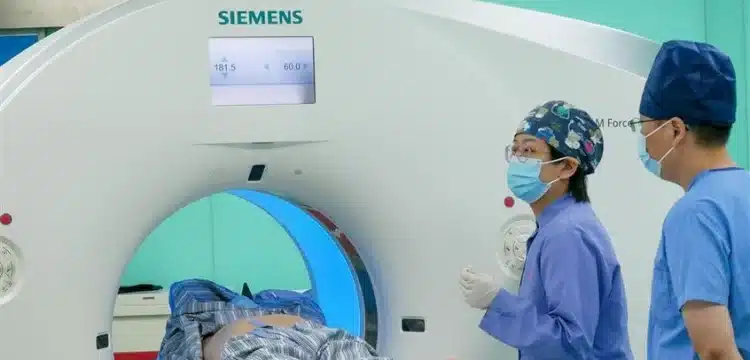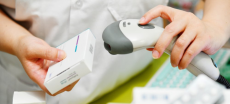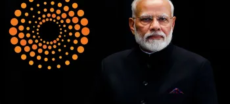[vc_row][vc_column][vc_column_text dp_text_size=”size-4″]The subject of information technology is wide and has led to numerous innovations in practically every industry. Nearly every industry has a big impact from artificial intelligence. It has advanced the field, whether we’re talking about the media, financial institutions, educational institutions, or even health care. The developments in numerous facets of the health industry are sufficient to show how important cutting-edge technology, intelligent systems, and new inventions are.
While wearing AR glasses linked to a digital system and inserting a lengthy needle into a patient’s chest wall, doctors alter an image of organs in the air with their hands. Utilising a green line, the device offers visualisation of the position and depth of the needle puncture for successful evaluation and analysis of the pulmonary nodule.
Also Read: Clinical Trials for the First AI-Generated Medicine Involved Patients
The Shanghai Chest Hospital is where the procedure is happening. Artificial intelligence, on the other hand, has provided doctors a new approach to work effectively and cause patients’ less suffering and inconvenience. The development of technology has made it possible for doctors to work more effectively. The use of minimally invasive surgery in early-stage lung cancer surgery has grown significantly with the development of clinical technologies.
One of the most difficult and painful tasks for most patients is the identification of a pulmonary nodule. When doctors use a large needle and a CT scan to enter the chest wall and detect the lump, the procedure is agonising. Only regional anaesthesia maintains motion as the lengthy needle is inserted into the chest. As a result, the surgery is complicated, requiring at least three medical professionals to be on hand. A nurse is also required to oversee the entire procedure and closely monitor the patient until they enter the operating room.
Additionally, the procedure adds to the workload in the CT room. “The anxiety and pain patients experience during the process was the biggest motivation for my team to team up with computer engineers from Xenova, a startup company in Shanghai, to develop a digital system to solve the issue,” says Dr. Cheng Xinghua of the Department of Oncology at Shanghai Chest Hospital.
He added, “There is no longer any requirement to undergo the CT-guided needle puncture. Patients are taken directly to the operating room for a puncture while under general anaesthesia. It is a digital system that our doctors and engineers entirely created, with full ownership rights.
Before surgery, doctors use the patient’s data to create a digital twin of the patient. A digital patient structure comprising blood arteries, skin, tumours, and other interior information is created by the system. The technology generates an accurate needle puncture with an actual position and path. To create pre-plans and preoperative training, doctors build operation plans and even mimic various crises and unfavourable outcomes during surgery.
As stated by Cheng Xinghua, “The system can even stimulate lung collapse for doctors to try different medical solutions.”
All the organs, blood vessels, and surgical components can be clearly observed through a 3D-Holographic format by donning AR glasses. .oreoevr, it doesn’t need the CT room for preoperative localization but instead goes directly to the surgery room where the treatment is given under general anaesthesia. Through this, clinicians will be able to operate the model confidently merely by moving their hands.
Digital technology may lower costs and increase effectiveness, according to Cheng. In addition, he added, “The system can reveal the puncture site and depth of needle we should enter into the chest wall by wearing the glasses. The process takes one minute to complete when we follow the instructions. The patient won’t have to experience radiation or pain, and the medical team won’t have to waste time going to the CT room. Patients profit, and the medical procedure is streamlined
The system has submitted applications for industrial uses and now has five patents.
According to Cheng Xinghua, “The technology can be used not only in early-stage lung cancer surgery, but also in other surgeries, such as liver surgery, brain surgery, and bone surgery, to provide an immersive guidance for surgeons and improve accuracy and efficiency.”
“The system can also predict the outcome for plastic surgery, helping the doctor and the patient understand better.”[/vc_column_text][/vc_column][/vc_row]











